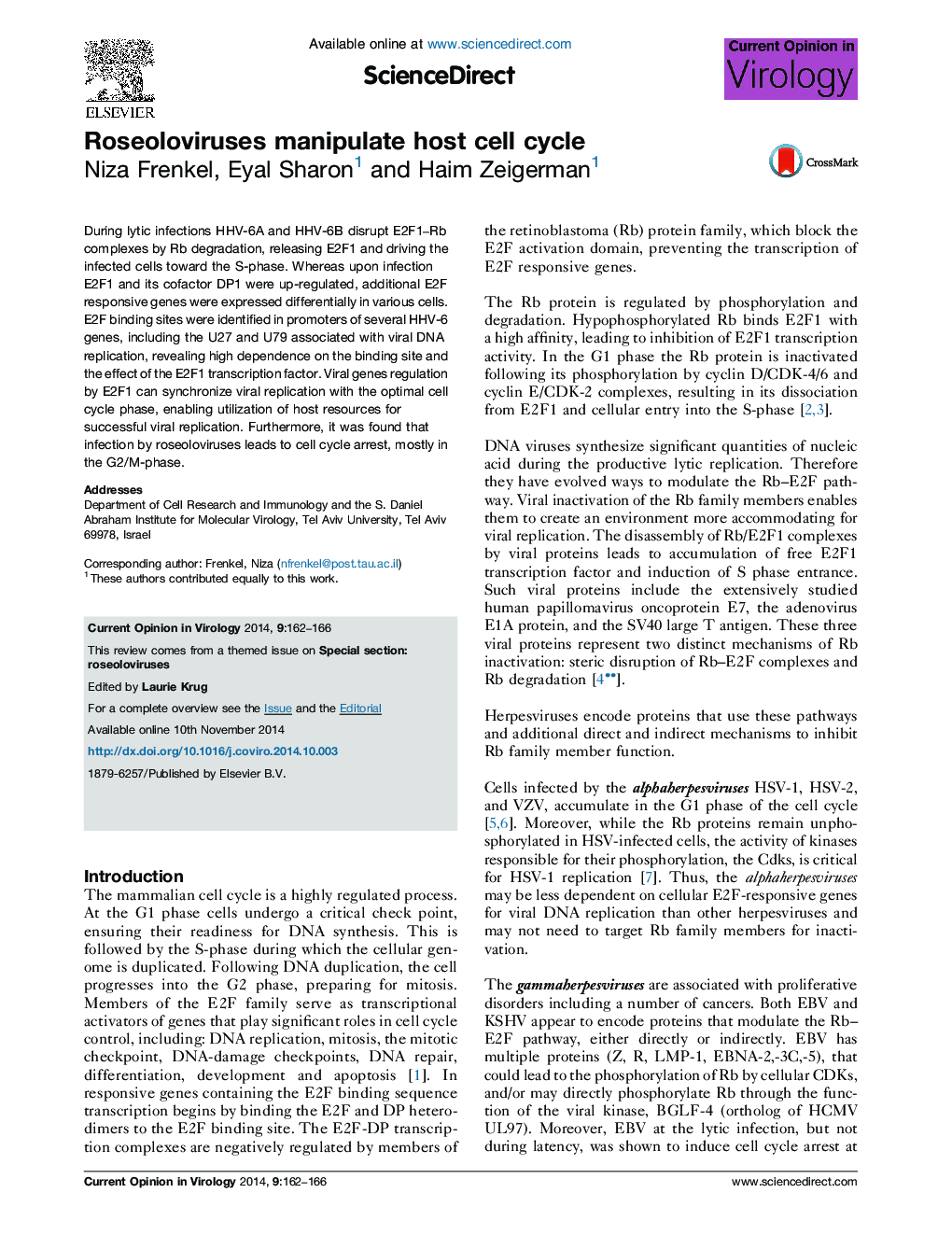| Article ID | Journal | Published Year | Pages | File Type |
|---|---|---|---|---|
| 2473341 | Current Opinion in Virology | 2014 | 5 Pages |
•Roseolovirus infections induce cell cycle arrest at G2/M. The infection leads to Rb degradation and release of E2F1 transcription factor.•Although E2F1 increased there was no up-regulation of cell cycle responsive genes.•The release E2F1 was employed in viral gene transcription.
During lytic infections HHV-6A and HHV-6B disrupt E2F1–Rb complexes by Rb degradation, releasing E2F1 and driving the infected cells toward the S-phase. Whereas upon infection E2F1 and its cofactor DP1 were up-regulated, additional E2F responsive genes were expressed differentially in various cells. E2F binding sites were identified in promoters of several HHV-6 genes, including the U27 and U79 associated with viral DNA replication, revealing high dependence on the binding site and the effect of the E2F1 transcription factor. Viral genes regulation by E2F1 can synchronize viral replication with the optimal cell cycle phase, enabling utilization of host resources for successful viral replication. Furthermore, it was found that infection by roseoloviruses leads to cell cycle arrest, mostly in the G2/M-phase.
Graphical abstractHHV-6 infection induces Rb degradation and E2F1 release. The elevated level of free E2F1 is utilized for expression of viral and cellular genes. The infection leads to cell-cycle arrest in G2/M. The protein product of the viral gene DR6 was identified as an inhibitor of G2/M cell-cycle progression.Figure optionsDownload full-size imageDownload as PowerPoint slide
